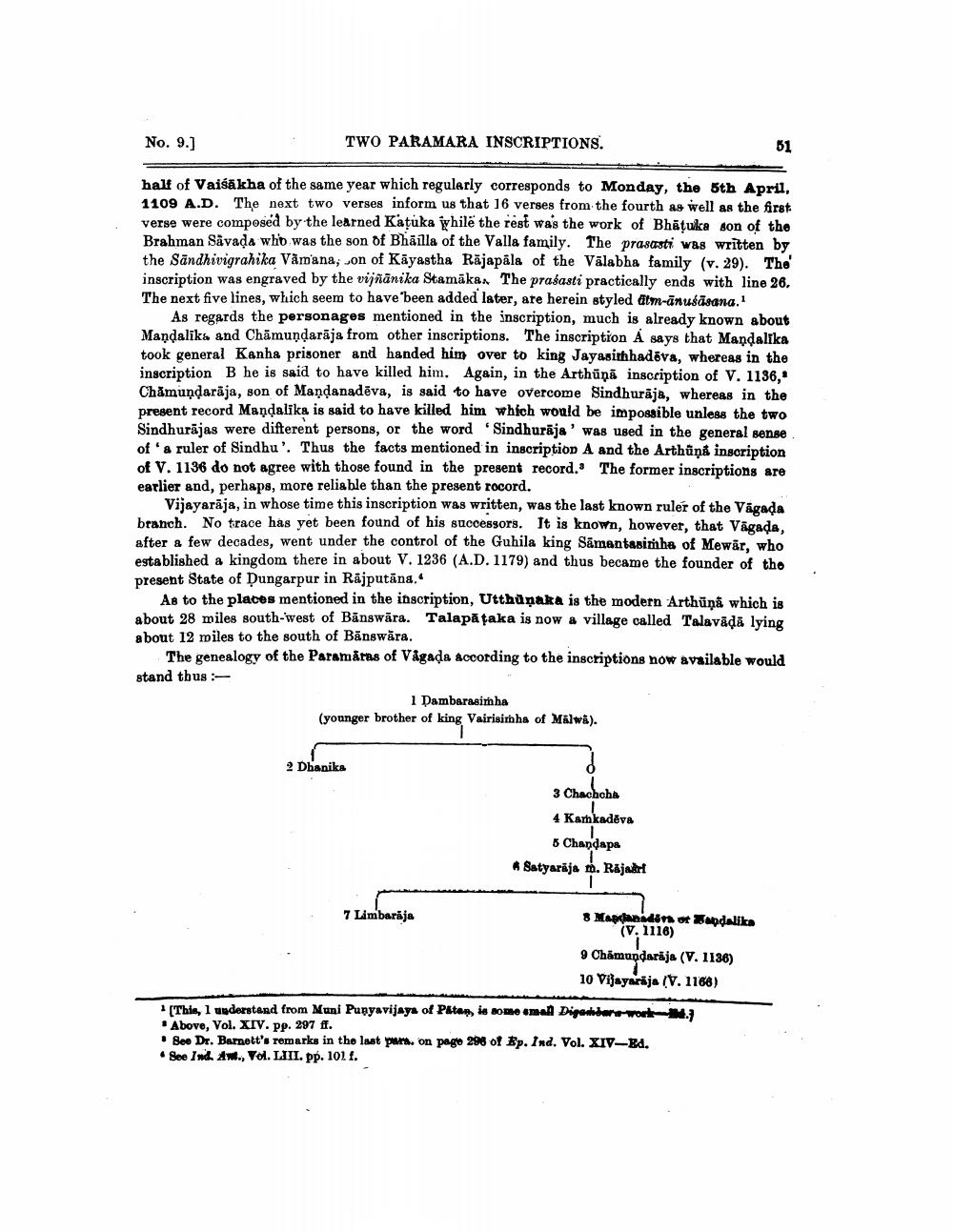________________
No. 9.]
TWO PARAMARA INSCRIPTIONS.
half of Vaišākha of the same year which regularly corresponds to Monday, the 5th April, 1109 A.D. The next two verses inform us that 16 verses from the fourth as well as the first verse were composed by the learned Katuka while the rest was the work of Bhätuka son of the Brahman Sävada who was the son of Bhailla of the Valla family. The prasasti was written by the Sandhivigrahika Vāmana, on of Kāyastha Rajapala of the Valabha family (v. 29). The inscription was engraved by the vijñānika Stamāka. The prasasti practically ends with line 26. The next five lines, which seem to have been added later, are herein styled atm-ānusāsana.
As regards the personages mentioned in the inscription, much is already known about Mandaliks and Chāmundarājs from other inscriptions. The inscription A says that Mandalika took general Kanha prisoner and handed him over to king Jayasinhadēva, whereas in the inscription B he is said to have killed him. Again, in the Arthūņā inscription of V. 1136, Chămundarāja, son of Mandanadēva, is said to have overcome Sindhurāja, whereas in the present record Mandalika is said to have killed him which would be impossible unless the two Sindhurājas were difterent persons, or the word 'Sindhurāja' was used in the general sense of a ruler of Sindhu'. Thus the facts mentioned in inscription A and the Arthûna inscription of V. 1136 do not agree with those found in the present record. The former inscriptions are earlier and, perhaps, more reliable than the present rocord.
Vijayarāja, in whose time this inscription was written, was the last known ruler of the Vagada branch. No trace has yet been found of his successors. It is known, however, that Vagada, after a few decades, went under the control of the Guhila king Samantasimha of Mewar, who established a kingdom there in about V. 1236 (A.D. 1179) and thus became the founder of the present State of Dungarpur in Rajputāna.“
As to the places mentioned in the inscription, Utthanaka is the modern Arthüņi which is about 28 miles south-west of Bānswära. Talapā taka is now a village called Talavādā lying about 12 miles to the south of Banswara.
The genealogy of the Paramaras of Vågada &ccording to the inscriptions now available would stand thus
Dambarasimha (younger brother of king Vairisimha of Malwa).
2 Dhanika
3 Chachcha
4 Kamkadēva
6 Chandapa * Satyarāja . Räjalist
7 Limbaraja
8 Maadaanden of Sandalika
(V. 1116) 9 Chamundarāja (V. 1136)
10 Vijayaraja (V. 1168) 1 [Thin, 1 yderstand from Muni Punyavijaya of Patan, is some amal Digerebere-work . Above, Vol. XIV. pp. 297 ff. • Seo Dr. Barnett's remarks in the last part on page 296 of Bp. Ind. Vol. XIV-Bd. . See Inch A ., Vol. LIII. pp. 101 f.




